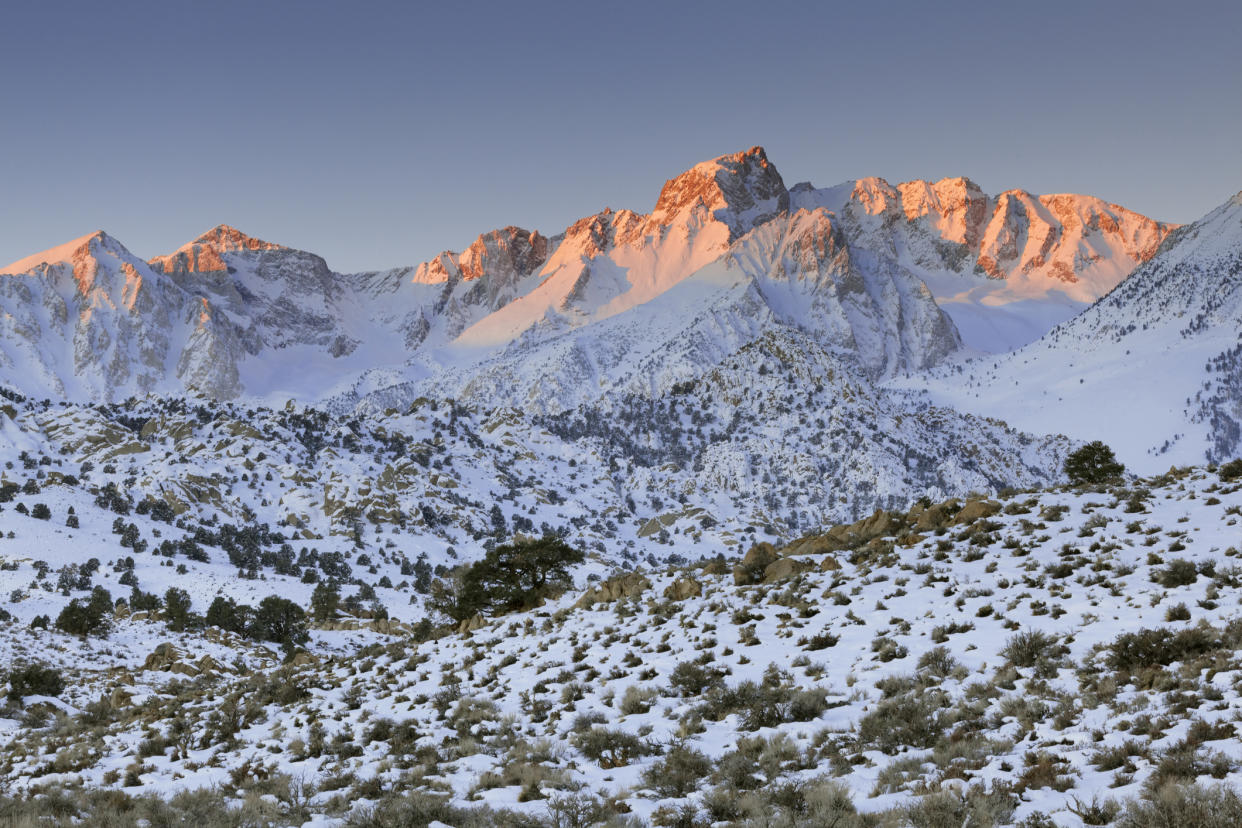California Drought Made the Sierras Rise an Inch

Although California's six years of drought finally came to end on in April this year, the state morphed because of the extreme lack of rain. New NASA research shows that the drought altered the Sierra Mountains, making them even taller. From 2011 to 2015, at the height of the drought, the mountain range raised itself by a full inch.
The Earth's surface falls when water weighs it down, and when the water is removed it starts to rise. "This suggests that the solid Earth has a greater capacity to store water than previously thought," says research scientist Donald Argus of NASA's Jet Propulsion Laboratory (JPL) in a press statement. Argus and his team also found that once snow and rainfall came back to the Sierras, the range started shrinking again, currently down 12 millimeters.
The Sierra Nevadas mainly reside in California and Nevada, and Argus' team relied on data from 1,300 GPS stations that have been placed in western mountain ranges from 2006 through October 2017. Installed as part of the National Science Foundation's Plate Boundary Observatory, the GPS stations measure subtle tectonic motion, monitoring active fault lines, and volcanoes. Highly sensitive, these stations can collect continuous data up to five times a second and detect changes of even a few millimeters.
The water lost from within the fractured rocks of the Sierras amounted to a stunning 10.8 cubic miles of water. While the water is inaccessible to humans, it is equivalent to 45 times as much water as the city of Los Angeles uses in a year.
"One of the major unknowns in mountain hydrology is what happens below the soil," says JPL water scientist Jay Famiglietti, who worked on the study. "How much snowmelt percolates through fractured rock straight downward into the core of the mountain?"
When tectonic plates aren't active, the rules of physics still shape what mountain ranges look like. There are a number of factors at play with how mountains moved, but the NASA team accounted for tectonic plates, volcanic activity, and high-and low-pressure weather systems while solely measuring the effects of water.
Famiglietti hopes the study will prod scientists to further look at water trapped within mountains. "What does the water table look like within mountain ranges? Is there a significant amount of groundwater stored within mountains? We just don't have answers yet, and this study identities a set of new tools to help us get them."
Source: JPL
You Might Also Like

